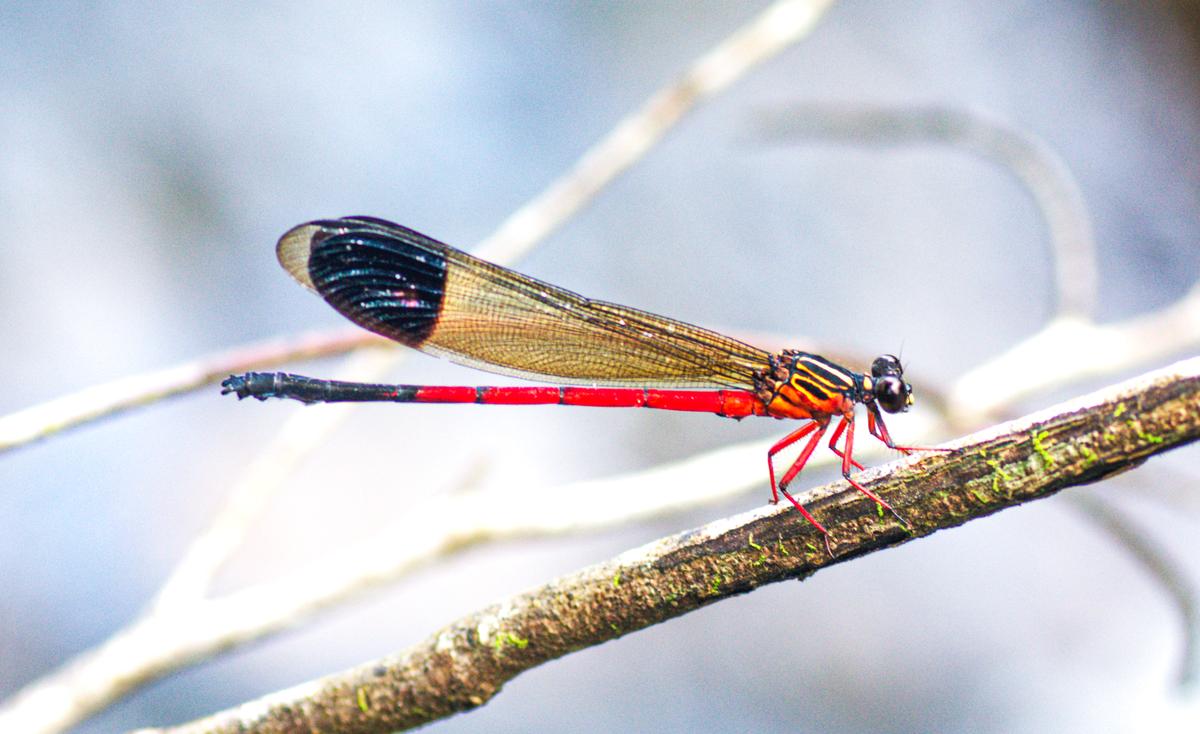Context
Euphaea wayanadensis was recently discovered species of damselfly. It is found in the Wayanad region of Kerala and contributes to Kerala’s 191st recorded odonate species and the 223rd in the Western Ghats.
Classification of the species:
- Family: Euphaeidae
- Initial Sightings: Discovered in 2013 along the Kalindi River, Thirunelli, Wayanad district.
- The species was initially mistaken for Euphaea pseudodispar, however, genetic and morphological studies confirmed it as a distinct species.
- Identification Process: The identification reflects the challenges of species recognition in the ecologically diverse Western Ghats.

Morphological Features of the species
- Hind Wing: Features a longer black patch compared to related species.
- Colouration: Males display broader, uninterrupted humeral and antehumeral stripes.
- Genital Structure: The male genital vesicle exhibits unique structural traits distinguishing it from similar species.
Habitat and Distribution of the species
- Preferred Habitat: Fast-flowing streams with rocky beds and aquatic vegetation in evergreen and semi-evergreen forests.
- Distribution: Found primarily along stream banks in the Western Ghats.
- Activity Period: Active year-round, except during the dry season (March-April).
- Vulnerability: Highly restricted distribution makes it susceptible to habitat loss and climate change.
Significance of the discovery:
- The discovery emphasizes the rich yet fragile biodiversity of the Western Ghats, recognized as a biodiversity hotspot.
- The limited distribution and vulnerability of Euphaea wayanadensis highlight the need for targeted conservation efforts.
- Protecting the habitats of such species is essential for preserving ecological balance in the region.
About Odonata Species
Odonata is one of the oldest and most fascinating insect groups, dating back millions of years. The group includes three main suborders: Anisoptera, Zygoptera, and Anisozygoptera.
Main Groups of Odonata
- Anisoptera (Dragonflies): These are typically larger and stronger fliers. They have larger eyes and a broader body compared to damselflies.
- Zygoptera (Damselflies): Smaller and more delicate, damselflies usually have a slimmer body and more slender wings that are often held together when resting.
- Anisozygoptera: This is a very small suborder with only two living species, making it the rarest among Odonata. They share characteristics of both dragonflies and damselflies.
Conclusion:
Euphaea wayanadensis serves as a reminder regarding the ongoing threats faced by unique species in the Western Ghats. It emphasises the significance of conservation to protect the region’s rich natural heritage and biodiversity.







